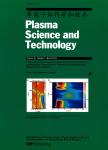Contrasting Behaviours of AC and DC Excited Plasmas in Contact with Liquid
Contrasting Behaviours of AC and DC Excited Plasmas in Contact with Liquid作者机构:Department of Mechanical and Electrical EngineeringGuangzhou University
出 版 物:《Plasma Science and Technology》 (等离子体科学和技术(英文版))
年 卷 期:2013年第15卷第8期
页 面:768-775页
核心收录:
学科分类:07[理学] 070204[理学-等离子体物理] 0805[工学-材料科学与工程(可授工学、理学学位)] 0702[理学-物理学]
基 金:supported by National Natural Science Foundation of China(No.51207027) Scientific Research Foundation for the Returned Overseas Chinese Scholars,State Education Ministry of China
主 题:electrical energy active species rotational temperature vibrational temperature energy use efficiency
摘 要:A comparative study of the needle-to-liquid plasma in the continuous mode with DC and AC excitations is detailed in this paper. All plasmas studied here are shown to be glow discharges. This study is based on measurements of several key parameters, including electrical energy, optical emission intensities of active species, rotational and vibrational temperatures, and temperatures of the needle and liquid electrodes. AC plasmas can produce 1.2~5 times higher excited state active species than DC plasmas under the same dissipated power. AC excited liquid plasmas have the highest energy utilization efficiency among the three systems (AC excited plasmas, DC excited plasmas with water anode and DC excited plasmas with water cathode); most of the energy is used to produce useful species rather than to heat the electrodes and plasmas.



